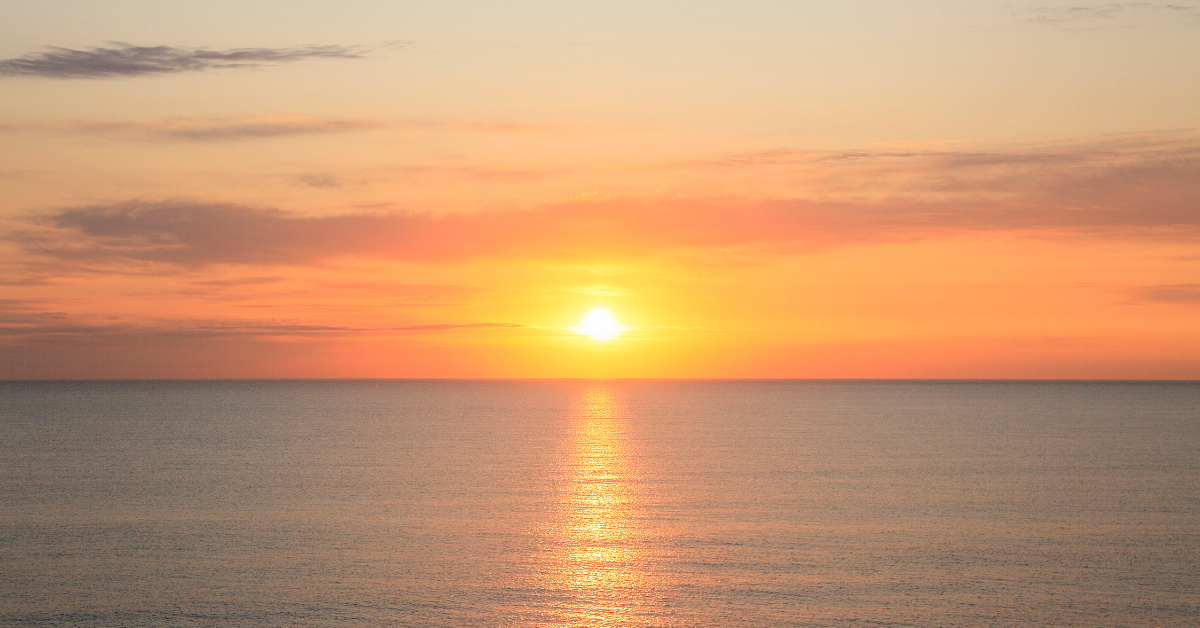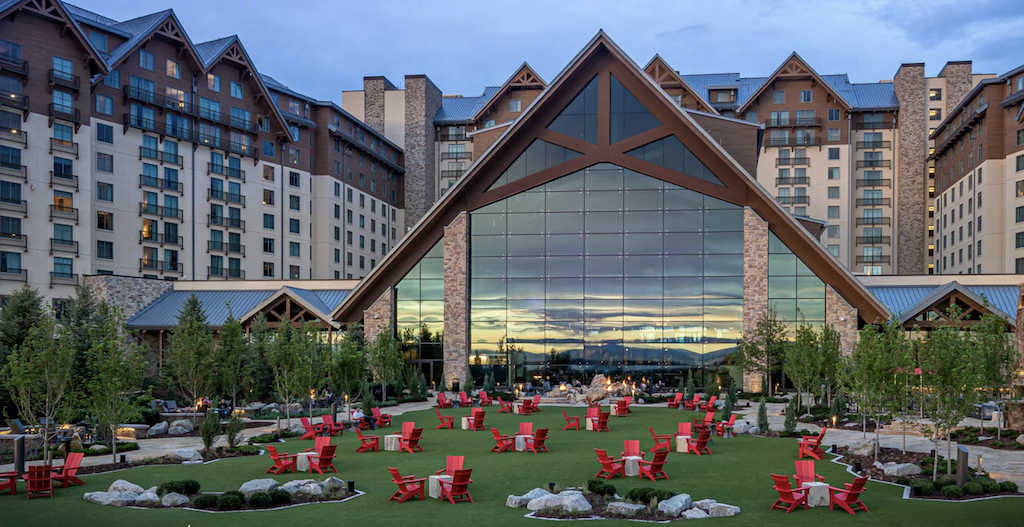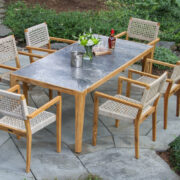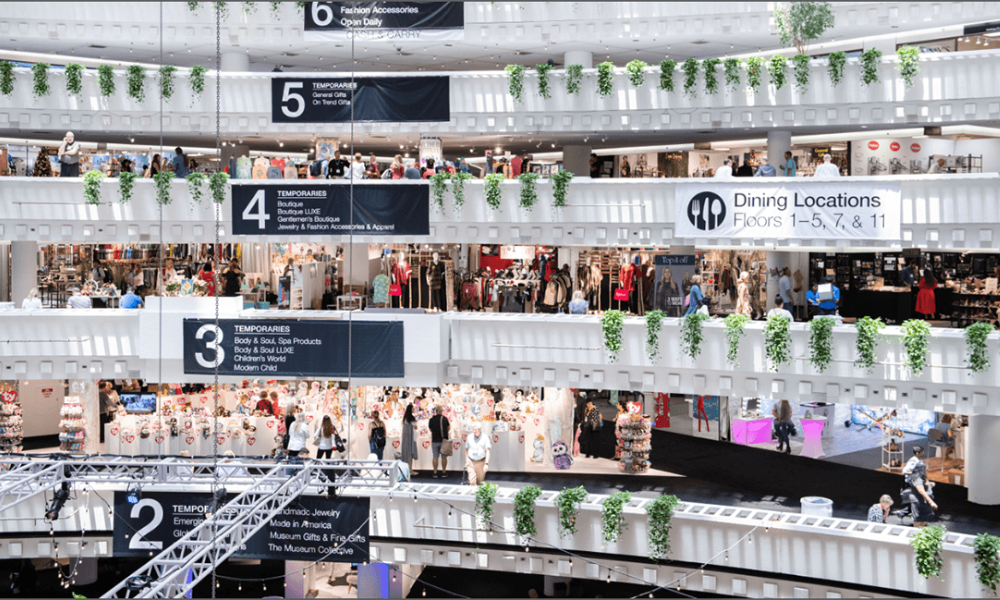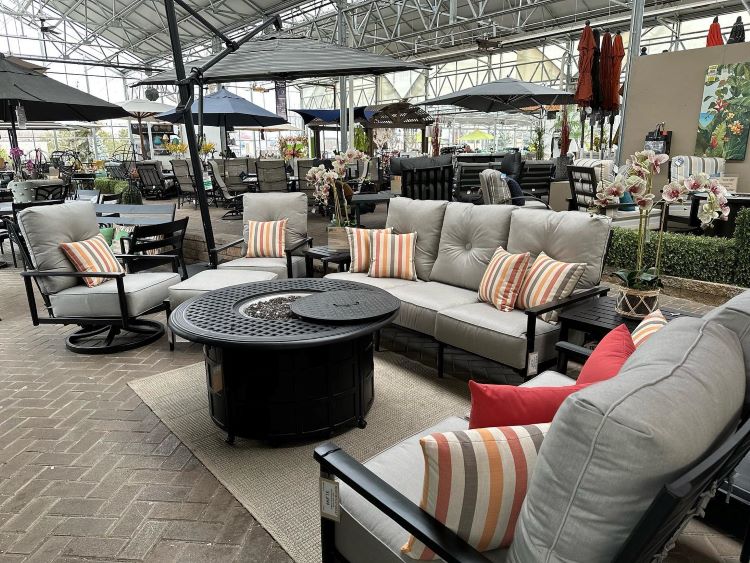Penn Stone in Lancaster, Pennsylvania, solidified the value of outdoor rooms by first providing a way for homeowners to build a patio more than 100 years ago — and then, in more recent history, adding patio furniture so that everyone would have a place to sit down.
Penn Stone first opened its doors as Pennsylvania Stone, Cement & Supply Co. in 1914. Subsequent ownership changes came in the late 1970s and again in the late 1980s.
John McGrann, who owns the business today, said that his family bought it in 1986 — and became aware of an opportunity: Landscape architects and hardscape contractors would send homeowners to their facility to pick out what kind of flagstone or pavers to install. It made sense to add in lines of patio furniture, firepits, lighting, shade and accent pieces, which came in 2005 after the outdoor store was added.

“I think we felt like there was an opportunity there, for incremental sales from our homeowners, and we thought there would be an opportunity to work hand-in-hand with our contractors designing these spaces,” says McGrann. “That second thing hasn’t worked out as well but the synergy has been a good thing, to have everything in one location.”
Another thing that has worked out well is to have one business — the hardscaping and stone side — not dependent on the weather the way the outdoor furniture business is.
McGrann said that, for him, what’s important currently can best be seen by considering what’s in the rear-view mirror.
“During the pandemic, people were so desperate to improve their outdoor living they were saying, ‘what do you have?’ and we were so low on inventory, they said, ‘that looks great, we will take it,’” says McGrann. “We went through that stretch for a little while. More recently, the homeowner customers are coming in here, and in a lot of cases, they might have finished a new professional construction project and it took longer and cost more than they wanted it to. They now have the attitude and mindset that they have just got this done and they just need a table. They are almost resigned to the idea that they need one more thing to finish their space: a table, or chairs or a sofa. They have just got to check a box.”
McGrann said that he is grateful that that’s ending — and about right now, he is looking to build on the momentum that was underway three years ago because of other market forces but was pushed up because of the pandemic.
“In 2024, it will be about new outdoor furniture purchases,” he says.
Another factor that needs to be considered is how buying is done in a normal year.
“Because for the past three years, we have been in a cycle where we can’t get something or what we could get came and went quickly,” says McGrann. “Our color in store got boring in 2022 and 2023 because that was what manufacturers were offering on short lead times and what the customers settled for because they wanted to get it.”
A year ago, what the store had ordered 18 months before, showed up all at once. Customer demand had faded by that time, which all added up to having to work on clearing inventory.
Along those same lines, McGrann says he has to guard against comparing sales this year to last year, because last year was an anomaly. Better to look at sales this year versus what they were in 2019.

“Sales are down but probably in line with where we have been historically,” says McGrann. “I think that’s fine. We have to think about the last couple of years as a bonus and not reality.”
What’s needed, he said, is to get back to normal.
“We really have to fall back into that seasonable rhythm of our business, to go and buy in collections and colors that are interesting and fun, to get the customers attracted, to get new designs on the floor and have them walk in the door next spring and get reminded that shopping for outdoor furniture is fun,” says McGrann.
From a marketing and advertising standpoint, McGrann says that Penn Stone has taken a second look at evaluating its mix of traditional media, outdoor, print magazine and social media. A relationship with a marketing agency ended because it wasn’t working out, despite Penn Stone’s efforts to coach them through it. About a year or so ago, Penn Stone made a change and hired someone to do a plan, while actual employees in outdoor furnishings and in hardscaping carried the plan out.
“We have gotten back to social media sounding and looking the way we want it to look,” says McGrann. “It’s professional and it produces results. What we are discovering is that settling in with that should give us the opportunity to rely mostly on social media and stop spending big dollars on billboards and magazines. They’re expensive and it is hard to know how well it works. We will be leaner in the next year and we will be saving or funneling those dollars into where we see results more easily and we can respond in real time. We have control on what we are saying and who is receiving those messages. It’s how we can thrive in a period where we might see sales retreat to a pre-pandemic level.”
When dealing with manufacturers, McGrann says he prefers to work with domestic manufacturers. Given that Penn Stone is a mid- to a high-end store with a reliance on special orders, it’s important to find someone who has a reasonable turnaround time that’s acceptable to customers.
“It has to have a quality construction, something a customer can buy and keep for 10 or 20 years,” says McGrann. “It’s not disposable; it’s not that warehouse-store quality. It’s durable and it’s a brand that prioritizes good design. That has become a niche for us — we emphasize durability and design and we are finding customers who are valuing those things.”
Another benefit that Penn Stone provides is a high level of concentrated customer service.
“Our team today are the same people who worked here in 2019 and our customers like that,” says McGrann. “They like coming in here and seeing someone who they have worked with in the past. A lot of that is building a lot of trust with our customers’ brands. If our customer comes in, we can call the manufacturer and we can deliver an outcome that the customer will feel satisfied with. When we can do that, we win lifelong customers. When we discover we can’t give a customer the outcome they think they deserve raises questions with us as to whether we are partnered with the right manufacturer.”
In terms of competition, Penn Stone has a direct competitor with high-end outdoor brands about 15 miles away, as well as lesser competitors, which are big-box stores and the like. One local full-line store has flirted somewhat with carrying Tommy Bahama and Summer Classics, but the challenge is what’s just outside the showroom doors.
“In our part of Pennsylvania, it is kind of tricky to be in the outdoor furniture business,” says McGrann. “Weather is a big deal here. It can feel like spring the third week of March or the third week of May when it arrives. I think full-line stores converting a portion of their store for outdoor for three months and risking that those three months might come with crappy weather. If it rains for six weeks in late March and April, they don’t want to get burned with a bunch of inventory and lackluster sales. I think it is harder than indoor furniture.”

Another challenge comes when customers point and click, rather than get in their Toyotas and drive.
“For us, there are certainly customers out there who don’t understand they have to sit on it,” says McGrann. “For customers who want to shop online, we are ‘good luck with that, hope it works out for you.’ We will focus on the customers who want to do all the things you can only do in person and who enjoy the customer service experience. We are always looking for ways to give people reminders about the benefits of in-person shopping in subtle, quiet ways.
Any advice for struggling casual retailers?
“Be realistic,” said McGrann. “I’ve had two versions of this conversation with the stone and brick side – one was one of our customers who installs ponds and wants to have a retail store selling pond parts and supplies. You really have to have a clear picture of what the sales volume will be. I had a rude awakening. It took longer to reach the sales threshold that made us profitable than I thought it would.
“Being in retail, it is very challenging to staff that. The thing I underestimated was the burden of having our store staffed all the time, especially evenings and especially Saturdays and especially all year long. Having an outdoor store open all year around in Pennsylvania — there are some pretty quiet days. You have to be realistic about the seasonality of this business.”

